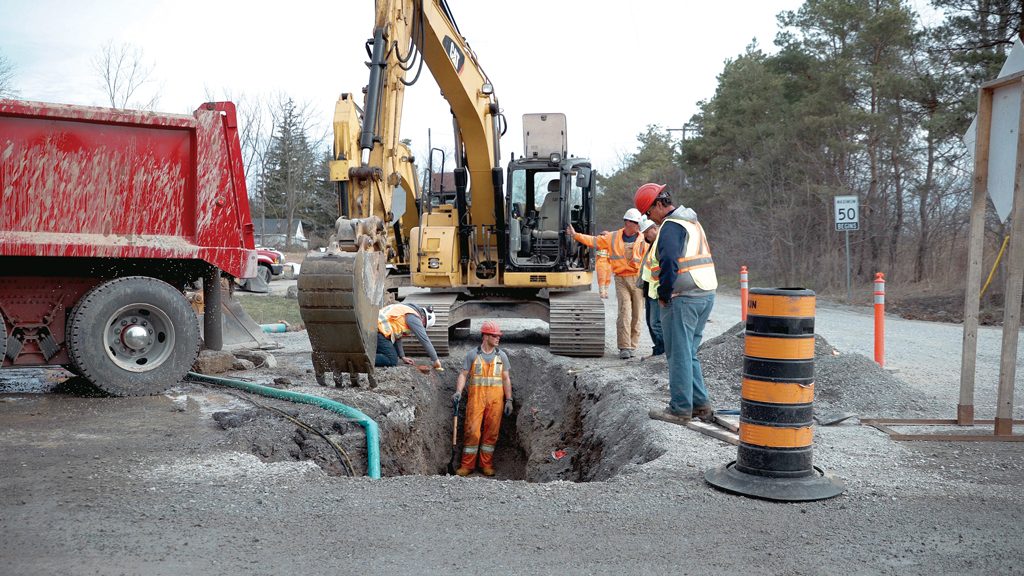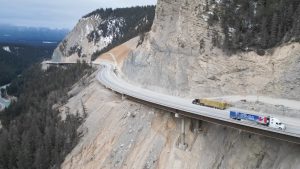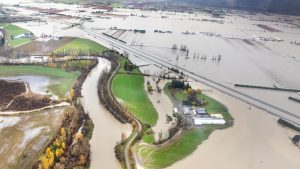Stretching from suburban Crystal Beach to downtown Fort Erie and passing through a mix of residential and farm areas, Dominion Road 1 achieved a rather dubious honour in 2016 when it made the top spot in the Canadian Automobile Association list of worst roads in the country.
Now, the east-west Class Three road is making history again and for more positive reasons. An $18-million reconstruction of a 5.7-kilometre stretch from Buffalo Road to Burleigh Road is Niagara Region’s first-ever design-build road project.
Beam Rankin Joint Venture Inc. is the design builder. It consists of contractors Rankin Construction and Alfred Beam Excavating and the consulting firms of Kerry T. Howe Engineering Limited, Upper Canada Consultants, and Raven Engineering.
Underway since last October, the project will deliver a list of new services including the replacement of five kilometres of decades-old asbestos cement regional transmission lines with new PVC ones, plus the installation of five kilometres of new town watermains, says Niagara Region project manager Michael Wilson.
Other work includes a bridge rehabilitation, drainage improvements, the erection of improved intersection road lighting, and a slight widening to accommodate 1.5-metre cycling lanes in both directions, he says.
“We decided to complete a pilot project for a design-build to allow the construction to proceed more timely. The road was at a point where construction was required sooner than later.”
Asked why the road had reached that state of deterioration, Wilson says it had been included in a ten-year road reconstruction priority list the region earmarked about five years ago. But the two back-to-back brutal winters of 2013/14 and 2014/15 accelerated the deterioration and there was a pressing need to fast-track the reconstruction timetable.
Although the region has proceeded with other design-build projects, such as wastewater facilities, this is the first time it has opted for a “linear” one, he says.
In explaining the rationale for the design-build model, he points out considerable research, such as reviewing other design build proposals and contracts prior to issuing a Request for Proposals from consultants, was conducted.
“We also reached out to the Ministry of Transportation for advice and help in preparing contract documents.”
After winning the consultant’s award in early 2015, WSP Canada scoped out the work required by creating a design to the 30 per cent stage and then issued an RFP for design builders in the summer of 2016, receiving four submissions.
Although the Beam Rankin Joint Venture bid was approved at the regional staff level, that decision had to be formally ratified by Niagara Region Council. That was given in January 2017, with design by the joint venture commencing shortly afterwards. By last October the joint venture team was on site tackling the project’s first and most-timing consuming phase.
Located well south of Ontario’s famed Niagara Escarpment, Fort Erie’s terrain is fairly flat. But it is close to Lake Erie and extensive rock excavation was required for the watermain installation, says Wilson.
“To date we have hoe rammed and removed in excess of 4,000 cubic meters of rock mostly during the installation of the new watermains. The majority of rock excavation work has now been completed, but it will be ongoing for the next several weeks to a much lesser degree,” says project manager and Rankin Construction senior vice president Sto Tritchew.
To accomplish that task the crews, which varied from two to three during the winter, used 45-tonne, GPS-equipped excavators for digging, 50-tonne excavators with 13,000ft/lb. hoe-rams for breaking the rock, 20-tonne excavators with hoe-pacs for compaction, a loader for backfilling and moving materials, and three dump trucks, he says.
“The excavated rock was hauled to a Port Colborne Quarry where it will be recycling into a crushed granular product for use on this and other projects.”
Apart from the rock excavation, the project’s most arduous component was this past winter’s working conditions and “maintaining the already deteriorated road which continue to deteriorate with the freeze/thaw (cycle).”
With nine crews consisting of approximately 52 workers, 30 pieces of heavy equipment and 32 trucks now on site, maintaining the ‘hectic’ traffic is also challenging, says Tritchew.
Construction is anticipated to be complete in the spring of 2019, says Wilson.











Recent Comments
comments for this post are closed